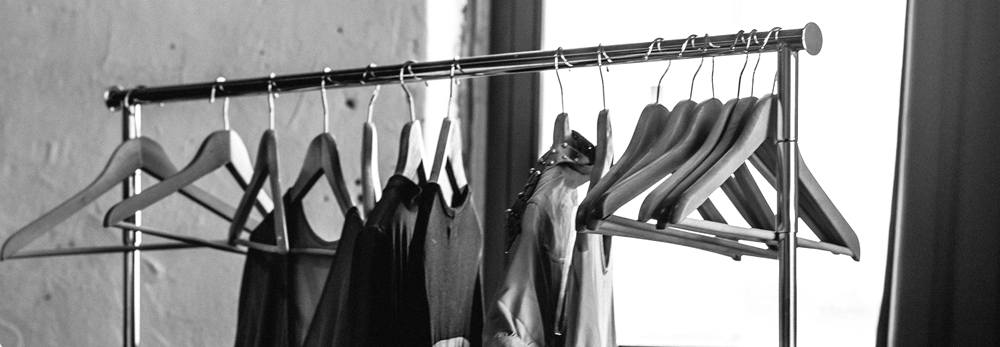
STORY: LIZZY SHRAMKO
ILLUSTRATION: ALLEGRA LOCKSTADT
PHOTOGRAPHY AND VIDEO: MARIE KETRING
MODELS: VILAY DETHLUXAY, LULA SALEH, KATE KHALED, & SARAH WHITE


It’s easy to sense where the West Bank neighborhood in central Minneapolis begins, but harder to say where it ends. The .5 square mile area is peppered with mosques and tea rooms that hem the riffraff of frat row and kegstand culture, spanning a several block zone that feels bigger than it actually is. I met Zahra Aljabri in the middle of Ramadan on the outskirts of the West Bank—at a Starbucks no less. An elegantly dressed woman donning a headscarf and carrying her sleeping daughter, Zahra is the entrepreneur responsible for creating Mode-sty.
Unfamiliar with the world of modest fashion?Open a browser. From MimuMaxi to Hipster Hijabis, blogs featuring women wrapped in colorful headscarves, gorgeous full length gowns and chic long-sleeved blouses abound. But while the women featured on these sites epitomize style, Zahra stresses that Mode-sty is not about fashion alone. It’s about choice and access for women who want clothing options outside of what the fashion industry deems mainstream. Finding skirts with hemlines below the knee on the racks at Forever21 or Express can be nearly impossible, and often women have to buy multiple pieces—which takes both time and money—to compensate for the fashion world’s oversight of their personal taste.

Originally from the suburbs of Los Angeles, Zahra did not always dress conservatively. It was a choice she settled into during college—a decision that exposed the lack of options available to women desiring different levels of coverage.
Her own experience revealed the extreme economic and social disadvantages that women like her faced in shopping for clothes.

Zahra moved to Minnesota in 2008 and began her career working with CAIR Minnesota. Even as a newcomer to the scene, she noticed there was a disconnect between organizations and the Muslim communities they aimed to serve. “Most of the Muslims in the community are immigrants and the people who set up community organizations are often doctors and engineers, not necessarily community builders. They set up organizations without the real insight of how to garner community support.”
This observation led to one of Zahra’s first entrepreneurial a-ha! moments and she jumped at the opportunity to employ technology to address this gap. MuslimBuddy, an online platform that connects individuals with Muslim serving organizations, was her first attempt toward a solution — an idea that earned Zahra a Bush Fellowship in 2012.
The freedom of the Bush Fellowship gave Zahra the space to think more deeply about the gaps in access for many—especially women.
Through greater access, Zahra believes humans are able to make choices that will ultimately lead to living better lives. It’s the idea that access and choice lead to collective social change. She explained, “There is more potential within our community, but it’s just locked away.”
Technology unlocks spaces for entrepreneurs to push back and create access for women who are traditionally overlooked by the fashion industry.“The internet is the only way I could’ve started this business.” Online access offers a way to connect with customers and provide them options, while alleviating the costs of renting physical space. Like the women-fronted fashion dynasties Nasty Gal and Mod Cloth, Mode-sty was born in the Internet age. But unlike Nasty Gal, Mode-sty does not represent the typical women of the fashion industry.

Choice and access have always been central to women’s movements—but rarely are these concepts connected to dressing modestly. As evidenced by the misguided attempt of the French government to liberate Muslim women by placing a ban on niqabs, Western-centric, women’s rights’ advocates often pinpoint conservative dress as the epitome of anti-feminism. For these organizations the concept of modesty is often associated with subservience. But who decides what is or isn’t liberating?
The double-bind that women face is that even when they bare skin they are criticized for catering to a male-gaze, or worse, blamed for sexual violence perpetrated against them. One thing that Mode-sty reveals is not just the lack of choice women face in the fashion industry, but the repercussions of living as a woman in our society.
Mode-sty is in many ways a response to an industry that ignores the experiences of women across spectrums of race, class, and religion.
For Zahra, Mode-sty “pushes back against the fashion industry and tries to link back fashion with women.”
Mode-sty’s carefully cultivated interfaith space caters equally to Orthodox Jewish, Muslim, and Christian women alike. “We all come together because we love this fashion and style, and the other beliefs that we have are tangential to that. I try to separate myself from the business so it can really just be about these women and the clothes.”

Zahra’s interest in dressing with coverage is reflective of her experience as a Muslim woman and she recognizes how faith and values inform the women who shop at Mode-sty. “When you think about religious and more conservative women—those who consciously dress modestly—the lack of options becomes this huge visible badge. These women should be allowed the same freedom that clothing provides for all women, to dress in a way that expresses themselves.”


Contributors







































